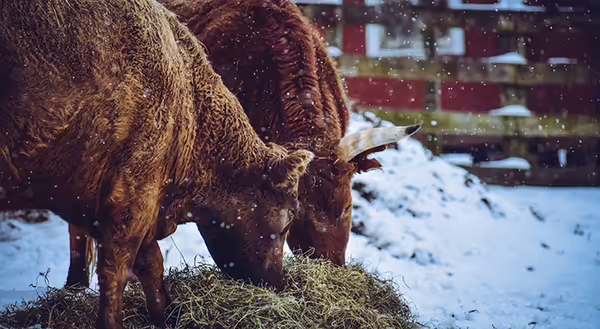
Dystocia, meaning “difficult birth,” often results in loss of a calf or complications after birth of a live calf. Some examples of complications after a difficult birth can include aspiration pneumonia, joint damage, nerve damage, and hypoxia. Another big problem can be failure of passive transfer resulting from inadequate colostrum intake and the calf not wanting to stand or nurse.
We know that not every dystocia can be prevented, but there are some management factors that can help reduce difficult births.
Maintaining cows in good body condition score (BCS), proper nutrition and mineral supplementation is crucial. A BCS of 5 to 6 for cows and approximately 6 for heifers at calving is suggested. Cows in good shape on a balanced diet will be fit and have the energy to make it through the calving process without exhaustion.
Selecting proven sires that can transmit calving ease and calf vigor is important. When buying bulls, traits such as calving ease direct (CED) can aid in helping the calf be born without difficulty. Traits like calving ease maternal (CEM) can help build calving ease into the female side of your herd. I think it is important to also look at the shape of the animal. Masculine bulls with flat, smooth shoulders and clean joints will likely be more advantageous as calving ease sires. Whereas females that have larger, downward sloping pelvic bones should offer some advantages from a maternal calving ease standpoint.
Pelvic scoring replacement heifers can help identify any outliers that may be too small or shaped poorly. This is most conveniently done when heifers are in the chute for estrus synchronization protocols.
Pregnancy check cows to determine calving date. This can target labor needs and ensure cows are in a good environment for calving. It is also warranted to state that not all dates will be 100% correct and that some may actually come prior to the due date, even on a proper diagnosis. So, be attentive and watch closely.
One way that I have witnessed many cattle producers checking cows is via cameras. Home security and surveillance systems have become much more affordable and technology has increased the capabilities of these systems. Checking cameras from a phone can be beneficial for night checks and allow multiple people to participate in the monitoring.
Lastly, don’t hesitate to assist if things appear abnormal or seem to be taking too long. Once the water bag appears, the calf should be delivered in 2 to 4 hours. Most healthy heifers will calve unassisted within the first hour after seeing the water bag appear. Most healthy cows will calve unassisted within 30 minutes of seeing the water bag. Absence of front feet, no sign of further progress, as well as other abnormal signs may expedite need for intervention.